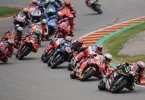Baseball is a game of precision, reaction time, and explosive movements. While power and technique are crucial, speed and agility often separate good players from great ones. A fraction of a second can mean the difference between a stolen base and an out, a diving catch and a missed opportunity. Developing elite speed and agility ensures that players can react faster, move efficiently, and perform at the highest level.
The Role of Speed and Agility in Baseball Success
Speed and agility influence every aspect of baseball performance, from running the bases to fielding ground balls. These attributes are not just about running fast; they involve acceleration, quick directional changes, and reaction speed.
A player’s ability to accelerate out of the batter’s box, steal bases, or chase down fly balls relies on explosive speed. Agility enhances movement efficiency, allowing players to adjust their positioning dynamically and respond instantly to in-game situations.
Building Explosive Acceleration for Base Running
Base running is one of the most significant areas where speed determines success. Whether sprinting from home plate or stealing a base, acceleration is key.
Enhancing First-Step Quickness and Sprint Mechanics
The first few steps of a sprint can make or break a play. A player’s ability to generate power quickly from a stationary position determines how effectively they can gain momentum. Strength training, sprint drills, and proper running mechanics contribute to better acceleration.
Explosive lower-body movements such as sled sprints and resisted accelerations train the muscles to fire rapidly. Developing these capabilities ensures that a player can reach top speed faster and gain a competitive edge.
Agility Training: The Key to Defensive Mastery
Agility plays a crucial role in defensive performance. Fielders must move laterally, react quickly, and maintain body control while tracking the ball.
Refining Lateral Quickness and Reaction Time
A defender’s ability to anticipate and react determines how well they cover ground and execute plays. Quick directional changes and smooth footwork are essential for maintaining balance and positioning.
Optimizing Footwork for Defensive Precision
Smooth and efficient footwork allows players to transition from one movement to the next seamlessly. Drills that emphasize lateral movements, backpedaling, and reaction-based changes enhance agility and body control.
Training with agility ladders, cone drills, and short burst sprints develops the coordination necessary for rapid movements. The ability to stay light on one’s feet and transition between motions effectively leads to improved defensive execution.
Strength and Conditioning: The Foundation of Speed
Speed and agility don’t develop in isolation. Strength training plays a fundamental role in an athlete’s ability to generate force and sustain explosive movement patterns.
Developing Lower-Body Power for Maximum Velocity
Leg strength directly impacts an athlete’s sprinting ability. Stronger muscles generate more force, allowing for greater propulsion with each stride.
Building Explosive Strength Through Resistance Training
Exercises such as squats, deadlifts, and plyometrics develop the fast-twitch muscle fibers responsible for explosive movements. Strengthening the posterior chain—hamstrings, glutes, and lower back—improves running efficiency and power output.
When combined with sprint drills, strength training ensures that athletes can translate their power gains into game-speed performance. The ability to move with strength and control enhances overall agility.
Neuromuscular Coordination: Training the Mind and Body for Speed
Speed isn’t just about physical ability; it’s also about how efficiently the brain communicates with the muscles. Quick reactions and precise movements require sharp neuromuscular coordination.
Enhancing Reaction Speed for Split-Second Decisions
Baseball is a game of rapid decision-making. The ability to read the play and react instantly is crucial for both offensive and defensive success.
Drills to Improve Reflexes and Decision-Making
Reaction-based drills such as partner chases, light signal sprints, and random-direction agility drills challenge the brain and body to work in sync. These exercises train players to process visual cues faster and respond with controlled, explosive movements.
Mental sharpness combined with physical agility creates a well-rounded athlete capable of executing at high speeds under pressure.
Endurance and Recovery: Sustaining Peak Performance Throughout the Game
Maintaining speed and agility over an entire game requires endurance and efficient recovery strategies. Players who fatigue quickly lose their ability to move explosively and react effectively.
Optimizing Energy Systems for Consistent Speed Output
Baseball involves bursts of high-intensity movement followed by short recovery periods. Training the body’s energy systems ensures sustained performance.
Interval Training for Speed Endurance
Sprint intervals, high-intensity drills, and proper conditioning programs help players maintain their speed and agility throughout the game. Developing stamina prevents fatigue from compromising performance in crucial moments.
Conclusion: Mastering Speed and Agility for Baseball Excellence
Speed and agility are game-changers in baseball. A player who can accelerate quickly, move efficiently, and react instantly has a significant advantage. By focusing on acceleration, agility, strength, neuromuscular coordination, and endurance, athletes can elevate their performance and dominate on the field.
The path to elite speed and agility requires dedication, intelligent training, and continuous improvement. Players who commit to refining these skills will always be a step ahead in the game.







